
The sculptural ‘Fish’ is Michael Harris’ hallmark and iconic design. It was designed when he was at the Royal College of Art (RCA), London, and produced from 1968 at his Mdina Glass studio on Malta, and from 1972 at his Isle of Wight Studio Glass company. It is unknown what inspired the form, but the unusual name makes more sense if one imagines a manta ray. The fine example shown on the left is from the front cover of my book on Michael Harris (1933-94) and his work, and is an excellent example of the mature design.
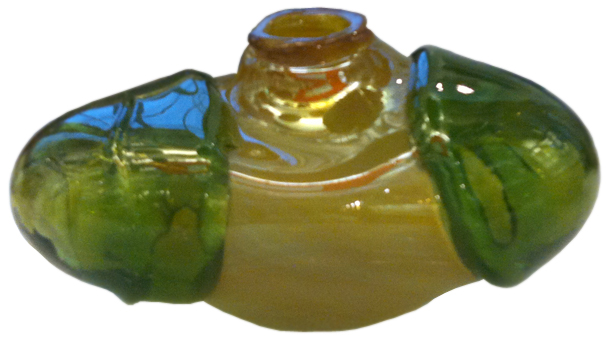
Although there is no known direct precedent, the form and its construction may have been derived from early pieces made by Sam Herman (b.1936), who in turn may have been inspired by the work of Harvey Littleton (1922-2013). Herman studied under and worked with Littleton at the genesis of the studio glass movement at the University of Wisconsin, USA, around 1964. Both Littleton and Herman produced rounded forms ‘cased’ with rounded applications, or ‘wings’, such as the example by Littleton dated 1965 in the Victoria & Albert Museum, London, shown above. As the early practitioners taught themselves how to handle this mercurial material, they experimented with colour, form and casing.
Herman met Harris when he travelled to the UK in 1965 on a Fulbright Scholarship. Harris was Tutor in Industrial Glass at the RCA, and Herman was invited to demonstrate the new studio glass techniques and build a ‘small furnace’ at the college by David, Marquess of Queensberry (b.1929), who was in charge of the ceramics and glass departments there. At the time, hot glass could only be handled by the college’s glassmaker, and neither students nor teachers were permitted to handle or make glass themselves. With Herman’s arrival, all this changed. Harris absorbed everything Herman could teach him, and worked hard to develop his glassmaking skills, whilst also continuing to teach his students and integrate the new practises into his course.
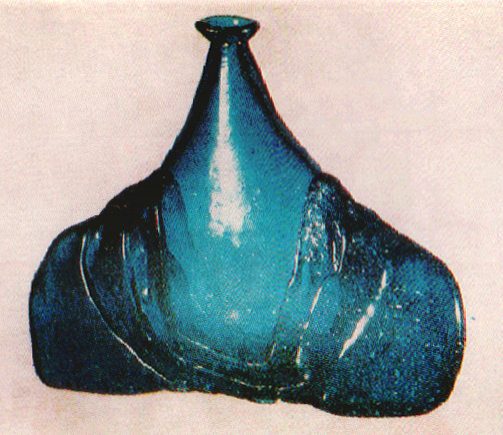
Harris took this particular production method practised by Herman and Littleton and adapted and developed it to produce his own design, which became known as the ‘Fish’. Here, more than one casing was used and the applied ‘wings’ were flattened out and began to be integrated into the body, which was itself flatted and rounded off. A neck was also formed by forming a ‘button’ rim and using it to pull the ductile glass out to form a tapering neck. An early example (shown left) produced at this time was illustrated in Czechoslovak Glass Review in 1967, in a report on a visit to the RCA by Pavel Hlava at the beginning of that year. Its current location is unknown.

Other early examples exist in the Harris Family Collection and private collections, and a couple have also appeared for sale online and elsewhere, but the vast majority – if not all – of these were most likely to have been produced at Mdina Glass after the furnaces were lit in June 1968. From late 1968 or early 1969, the button rim was cut off during production of a ‘Fish’, and the cut rim was rounded off in the furnace, to give the final tapering form seen on the the example at the top of the page. Therefore, ‘Fish’ with button rims are the earliest iterations known. We know that Harris produced the ‘trials’ or ‘samples’ for the range to be made at Mdina Glass at the RCA but no examples have yet been found.

To date, and to my knowledge, only one ‘Fish’ (well, nearly a ‘Fish’!) verifiably made at the RCA has ever been identified. It appeared for sale on eBay in North America around 2005, but was withdrawn from sale for reasons that were not given. Shown on the left, it is a misshapen, blocky (and largely very ugly) piece that was very clearly one of Harris’ first attempts at glassmaking – and is far, far away from the finished design. However, it is constructed in the same manner, with clear applied ‘wings’. It was signed by Harris and bore a further inscribed mark that identifies it as having been made at the RCA.
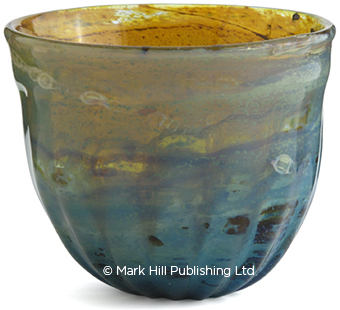
The same mark appears on a bowl (shown right) made, signed and dated by Harris that was acquired by me at auction from the collection of Ronald Stennett-Willson, Reader in Glass at the RCA from 1961-67. Definitively made at the RCA, this bowl is now on long term loan from my collection to the Isle of Wight Glass Museum, where it can be seen on display today.
I have now found and acquired a third piece that was almost without doubt made by Michael Harris at the RCA. And it is a ‘Fish’ – and an accomplished and appealing finished example too. In October 2019, a small collection of glass objects appeared for sale at Ewbanks‘ auction house in Surrey, England. Amongst them were three vases by Sam Herman, all signed and dated 1967. One of them was sold together with a ‘Fish’, shown below.
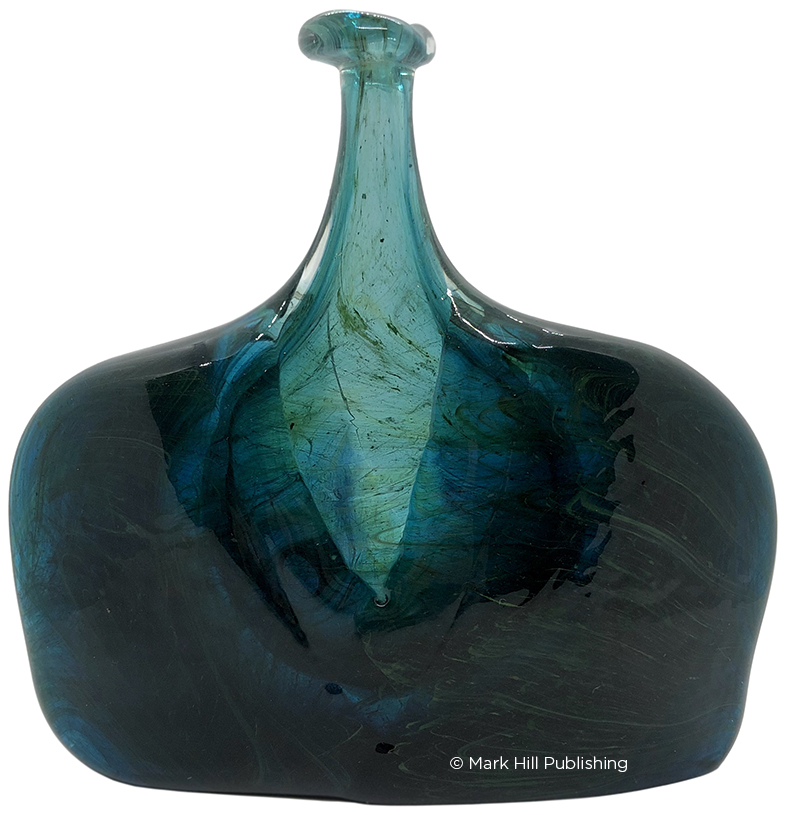
The Form
It is thickly blown and worked, with a flat-polished base covered with a myriad of fine scratches. The button rim is slightly offset, and the neck is thin and short, leading to a rounded, nearly rectangular body. The form is definitely very early. There’s a small internal well, and at least two layers of casings, or ‘wings’, without the applied trail or ‘strap’ gained from applying them in the manner of later examples. It also has strong shoulders with a flat, un-footed base cut comparatively high on the body, and lacks the proportion and sense of curving balance of early examples produced at Mdina Glass and later. It is representative of someone who is still working towards a final design. To find it unsigned or undated is not unusual – we know Harris was not keen on signing his work.
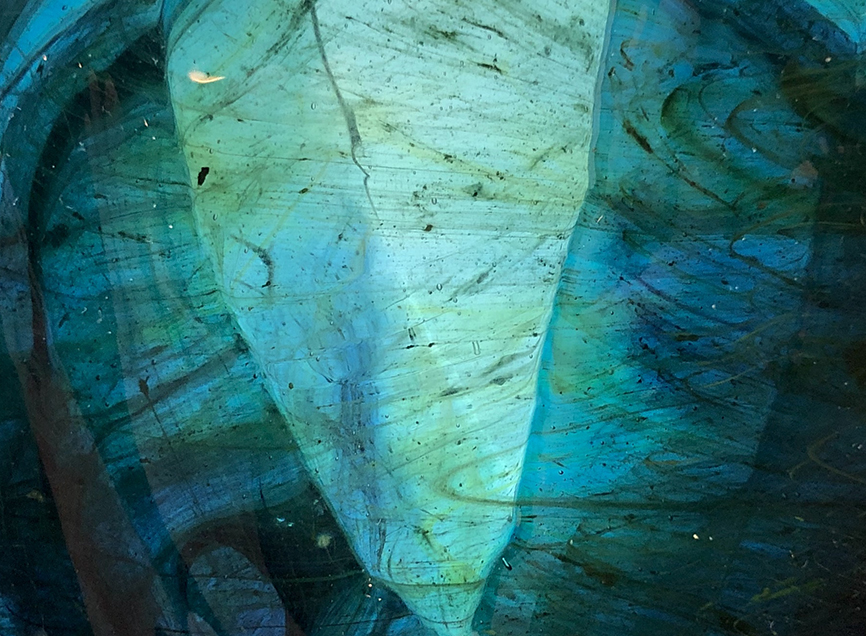
The Colour
The body is densely packed with streaks and striations, in deep tonal azure blue, turquoise and green colours, and is only just translucent in places. Silver chloride seems to have been used, but only in tiny amounts.
All the early button-top ‘Fish’ produced at Mdina Glass have different colour tones, meaning this must have been produced elsewhere earlier. Comparison with colour tones in Herman’s work from 1967 and the signed and dated bowl by Harris shown above show that they are all nearly identical to those on this Fish.
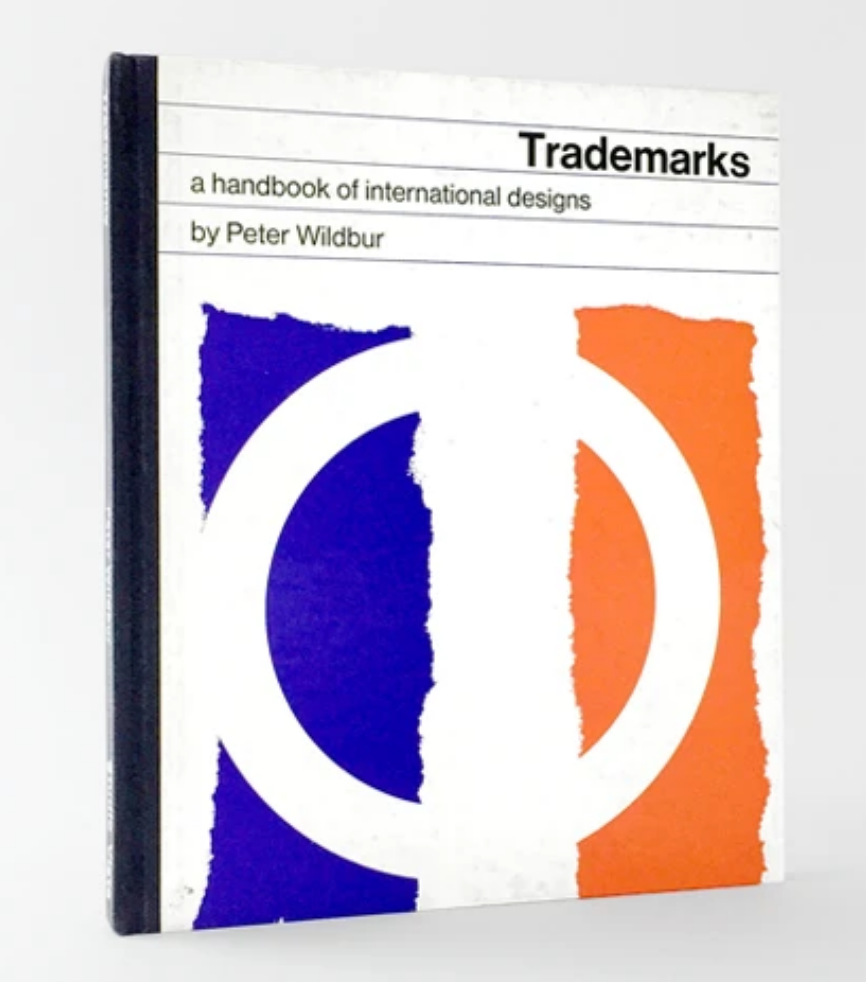
This ‘Fish’, the Herman vases, and the rest of the glass collection in the auction were owned by Peter Wildbur (1927-2019), a notable graphic designer best-known for his infographics. In 1960 he co-founded BDMW, a pioneering design group, with Derek Birdsall, George Daulby, and George Mayhew. Clients included Burmah Oil, the BBC and Penguin, and the group had close connections with the RCA, with Daulby being a Tutor there from 1959-60. Wildbur’s collection also included some notable 1960s designs by Finnish glass designers, so he clearly had an interest in mid-century modern glass design.

These facts and the dramatic, ground-breaking innovation of studio glass at the RCA mean that it is almost certain that Wildbur added Herman’s work dated 1967 and Harris’ ‘Fish’ to his collection in 1967 when visiting an exhibition, or through personal or professional contacts at the college. The ‘Fish’ and Herman’s dated vases must be contemporaneous.
In terms of form and colour, this example fits in neatly and perfectly before examples made at Mdina Glass and with other glass made at the RCA in 1967. It is finished enough to the extent that it may even have been part of the sample range produced before Harris left the RCA and UK on 23rd December 1967, and went to Malta to found Mdina Glass.
Thus, this new discovery can be considered the most important and accomplished example of the three different pieces of glass definitively made by Michael Harris at the Royal College of Art. It is also the earliest finished example of a ‘Fish’ yet found and would have contributed to the foundation of one of the most progressive studio glass companies of the 20th century as well as its iconic, hallmark design.
I’d like to thank the staff at Ewbanks for their help in putting me in contact with the vendor of the lot, and Ron Wheeler of Artius Glass for sending me the image of ‘The eBay Fish’ back in 2005.
Postscript: After publishing this post, a number of collectors kindly got in touch with images of their own early Fish and the stories behind them, if known. A couple are listed below.
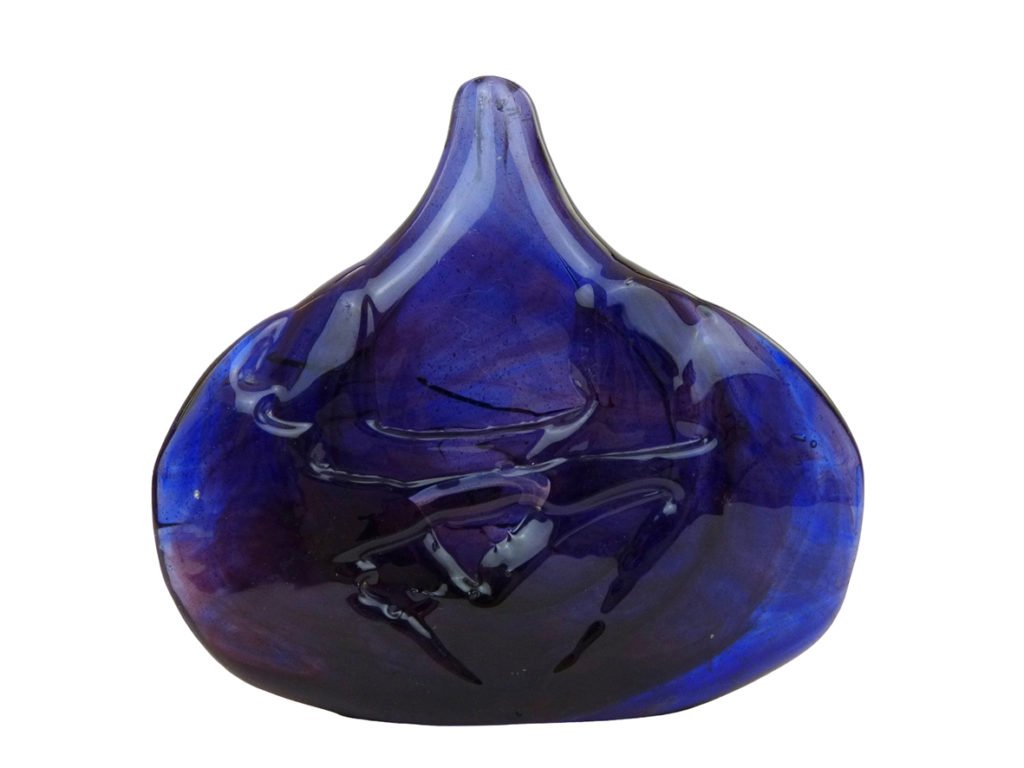
An unusual pink and blue early Fish. Private Collection. 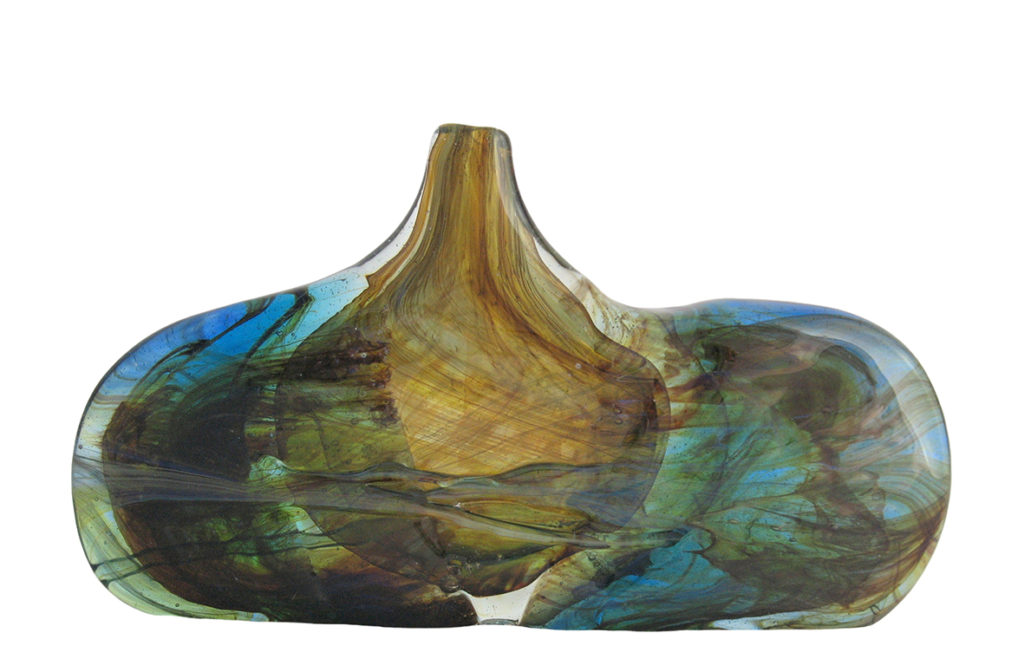
A tiny early Fish, (17.4cm wide, 9.7cm high), probably made at the RCA. Private Collection. 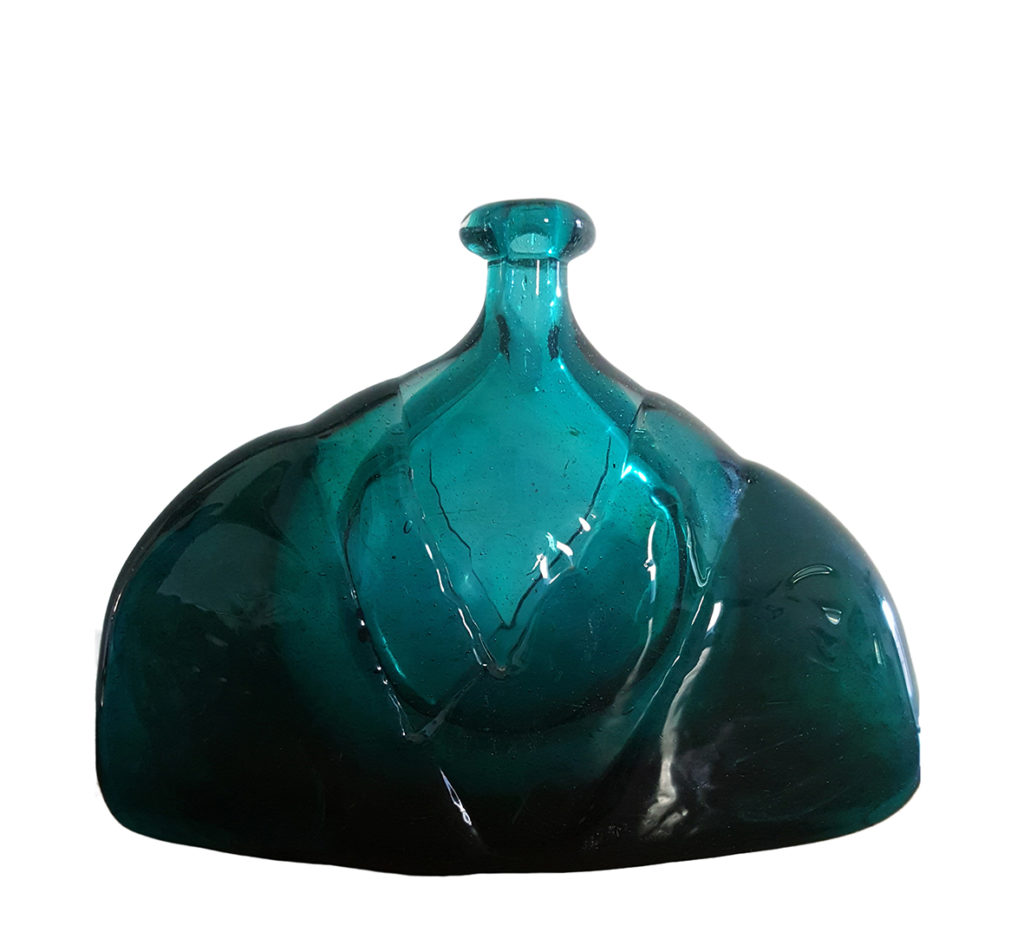
A Fish acquired from Michael Harris at the RCA. Thence by descent and purchase to the current owner. Private Collection. 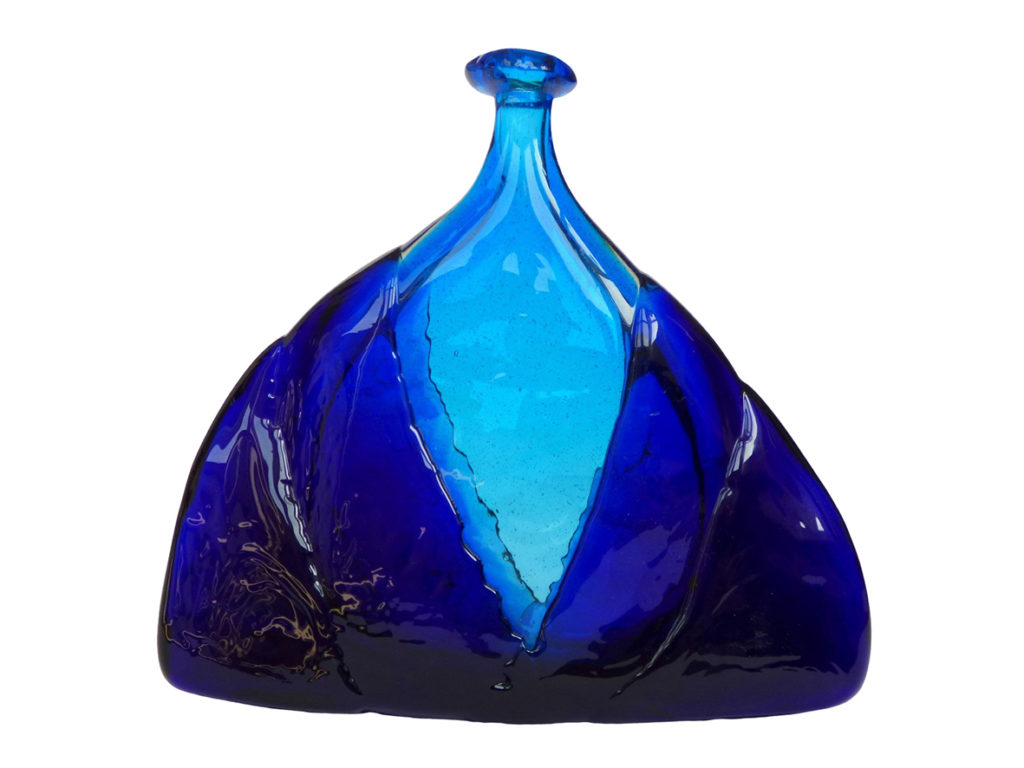
An early blue Fish, probably made at the RCA. Private Collection.

